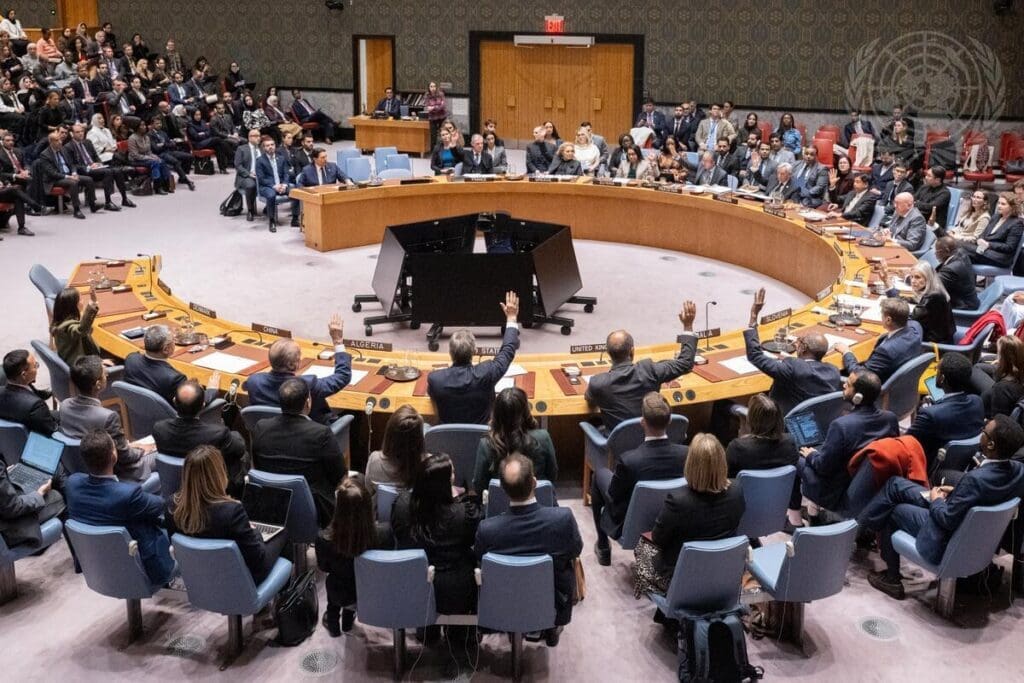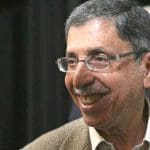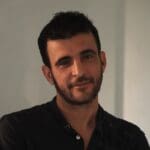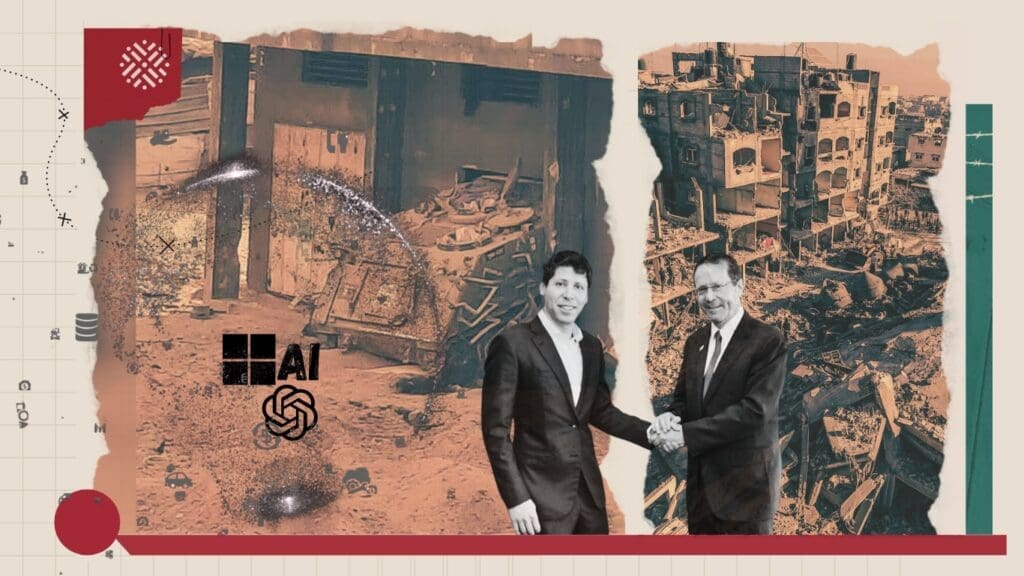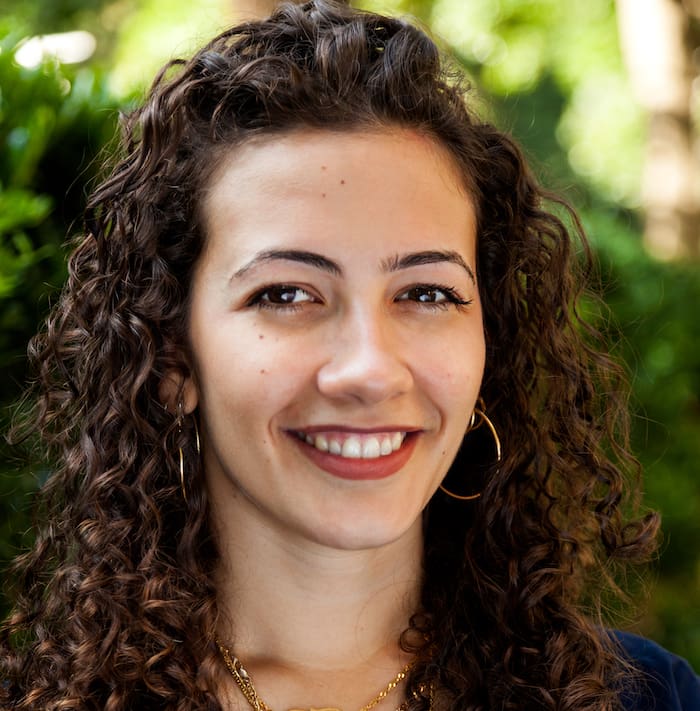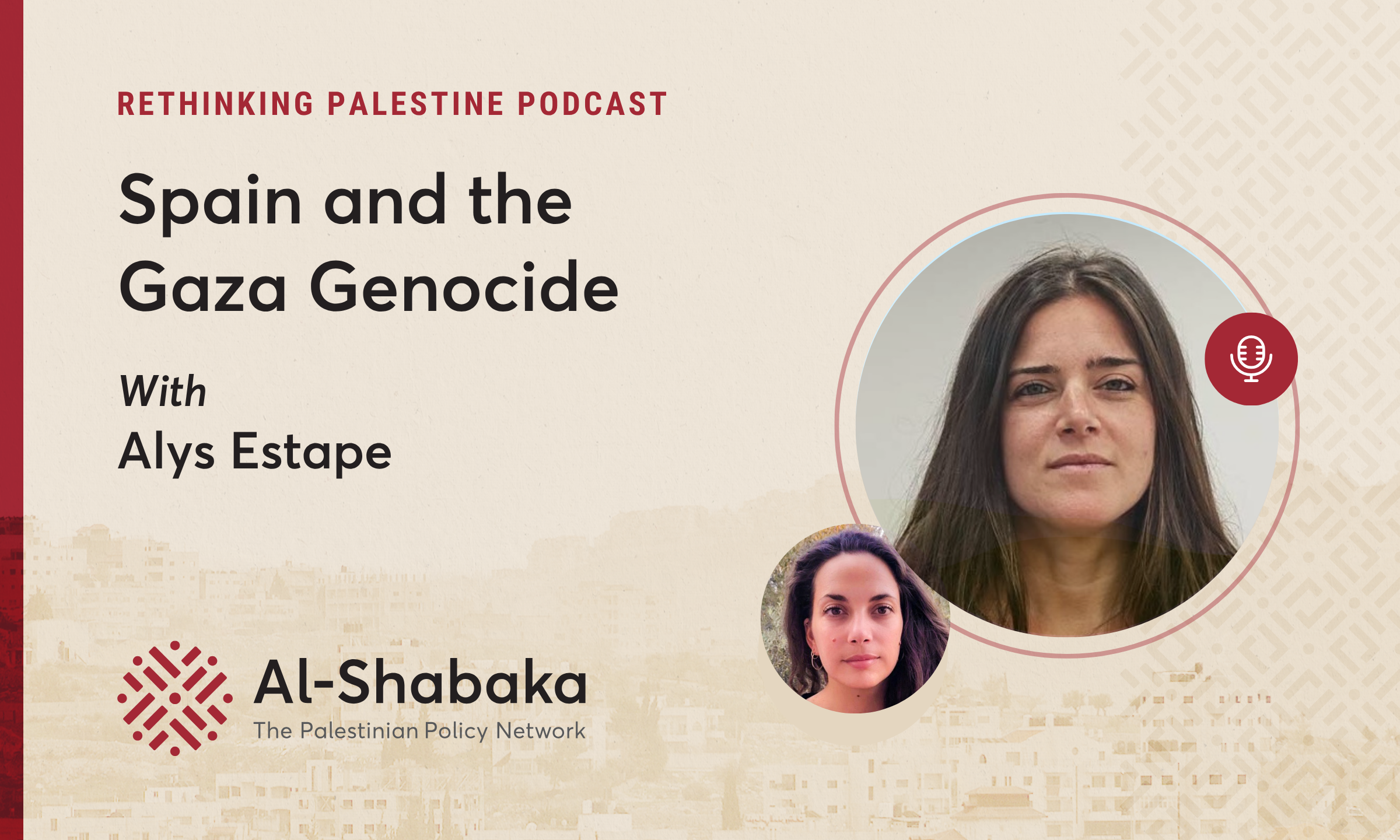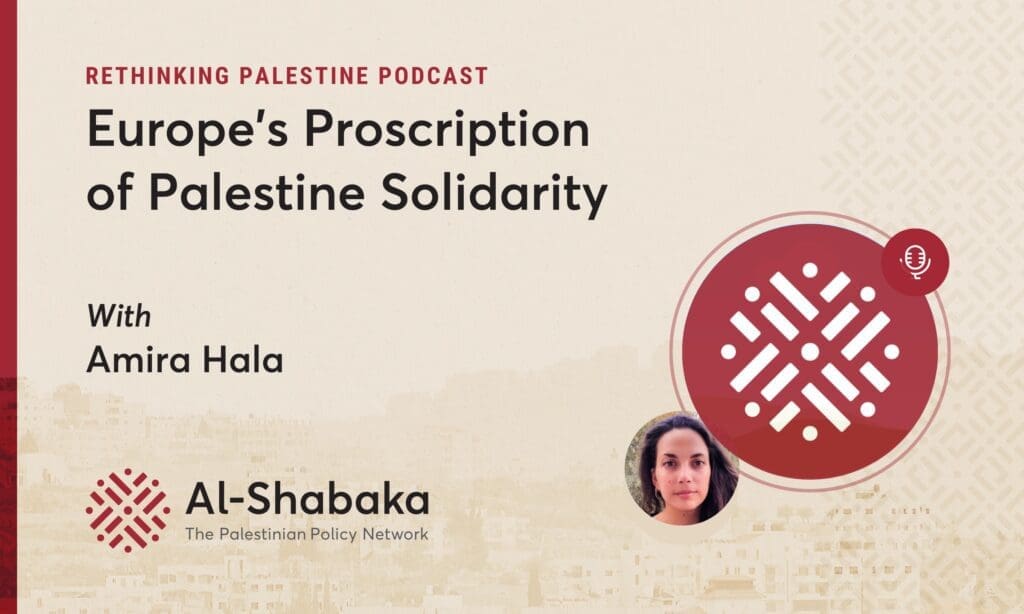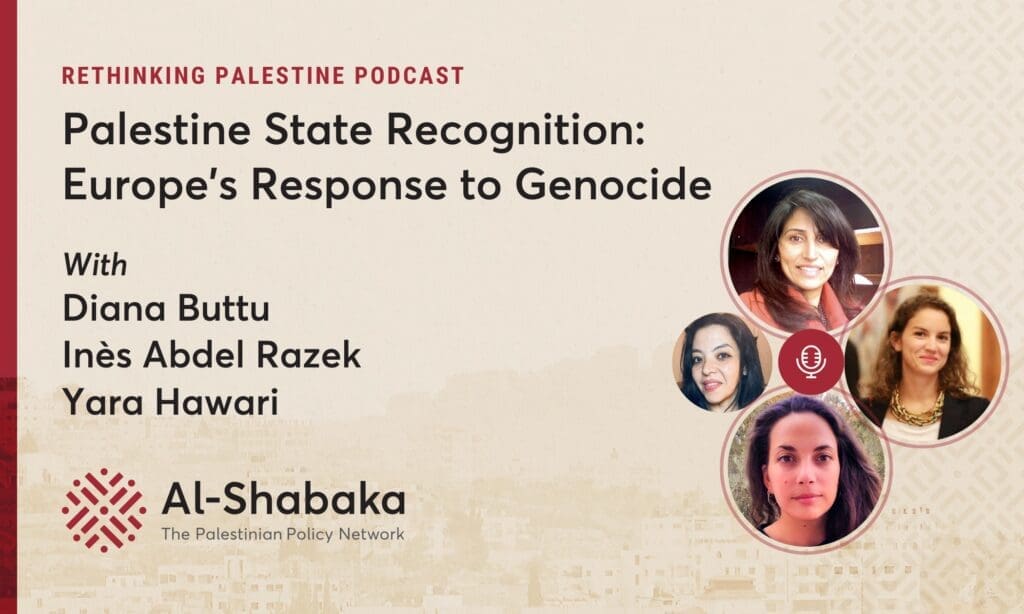About This Episode
Episode Transcript
The transcript below has been lightly edited for brevity and clarity.
Zena Agha 00:00
The Hebrew map was, and very much continues to be, an exercise in state formation. It’s a kind of living, breathing document of settler colonialism, where Zionist ideology is really infused with and folded into the spatial practices and the spatial manipulations of the Israeli state.
Yara Hawari 00:23
This is Rethinking Palestine, a podcast from Al-Shabaka: The Palestinian Policy Network, a virtual think tank that aims to foster public debate on Palestinian human rights, and self-determination. We draw upon the vast knowledge and experience of the Palestinian people, whether in Palestine or in exile, to put forward strong and diverse Palestinian policy voices. In this podcast, we will be bringing these voices to you, so that you can listen to Palestinians sharing their analysis wherever you are in the world.
The practice of mapping in Palestine and Israel has long been an exercise in power, imperialism, and dispossession. Al-Shabaka policy analyst, Zena Agha, published a policy brief in January this year, examining how Palestinians have been excluded from maps of their own land, from the British mandate to today, and explores ways that Palestinians can -and do- reclaim maps as a means of resistance.
I’m Yara Hawari, your host, Al-Shabaka’s Senior Policy Analyst, and for our first- ever podcast, we’ve invited Zena Agha, former US Policy Fellow, to discuss her brief. Zena, thank you so much for joining us.
Zena Agha 01:37
My absolute pleasure. Thank you for having me.
Yara Hawari 01:39
Perhaps we can start off by discussing mapping and cartography in general. Why is it important and what are the power dynamics involved?
Zena Agha 01:48
You’ve sort of gone right to the core of the subject – Why are maps important when what’s happening on the land deserves so much attention? I think they’re important because the world maps of today are very much colonial and nationalistic enterprises. They reflect the predominantly Western acquisition and control of territory.
So even though at one point maps were intended as sort of navigational tools, the effect of it in real time is to contain the diversity of a single bounded area as a form of control, and then charting that visually. So, the reason why we should spend a lot of time thinking about and critiquing maps is because they’re hieroglyphs of what was acquired and what is intended. And they’re essentially a contested space where land gets drawn, re-drawn, and reconceptualized on a visual plane – a visual two-dimensional plane.
Yara Hawari 02:42
Thank you, Zena, that’s really interesting. Now, in your policy brief, you quote Edward Said in your piece, who explained that the struggle over geography was one not only about soldiers and cannons, but also about ideas, about forms, about images and imaginings. What exactly is Said talking about here? And maybe you could elaborate a little bit with specifically to Palestine.
Zena Agha 03:07
Sure. I think what Said is trying to say in this quote is that essentially contested geography -contested land- isn’t just a question of the outward, militaristic side of warfare. It’s also about the ideas and the ideologies that go into constructing a place, and a large part of that are images. And of course maps, as visual images, represent a particular idea of the place, and in many ways kind of dictate the way that the warfare gets conducted. And I think actually, if we can textualize this, we’ll get a clearer understanding of what it is that he was getting at.
So let’s not forget that the latter half of the 19th century really just saw a flurry of orientalist exploration of Palestine, mostly by European scholars who are conducting historical, linguistic, archeological, geographic studies and surveys, with a particular interest, actually, in biblical and religious areas, of which of course Palestine is a very significant location. So up until this point, these medieval and early-modern or religious maps typically featured very fantastical imaginings of Palestine-Israel, with these biblical place names. These more modern conceptions, and these modern interpretations of maps, these sort of explorers cum cartographers really based their maps on a realism and an accuracy, which was dictated by a kind of enlightenment style scientific and a better commerce method. So even though the British Mandate didn’t actually come into effect until the early 1920s, the British government in many ways had been vying for control and domination over Palestine for decades.
And this really began with the first detailed survey of Palestine, which was the 1871 to 1877 Palestine Exploration Fund. The extensive survey actually was instrumental for Britain’s invasion of Palestine in the first World War. The scope of the survey matched almost exactly the borders of what the British Mandate of Palestine would be 50 years on.
And so I think what Said is trying to indicate here is that, although there is a sort of military and a very clear real politic aspect of acquiring and dominating geography and having a geographical imperative, in reality a lot of it is fueled by and motivated by ideas about forms, images, imaginings, maps, and all of these ideologies that go into constructing space – and actually in many ways are the roots, ideas behind the military intervention.
Yara Hawari 05:44
I think how maps are used in morphing colonization is something that people don’t necessarily think about that much. There’s something that I always remember being told about when I was a bit younger, that when the British were first colonizing Palestine, they would send archeologists and explorers who would carry a Bible in one hand and a trowel in the other. And I think it really emphasizes the use of biblical narratives and stories to map Palestine.
So “a land without a people, for people without a land” was and is such a key tenant of Zionism. And of course we know that the land Palestine wasn’t empty, but one of the main ways in which this myth was propped up was as a result of mapping. And as you mentioned, under the British Mandate and then later after the establishment of the state of Israel, how and why do they continue to do this? After the state of Israel was established?
Zena Agha 06:45
Yeah, it’s a very good question. Creating the Hebrew map was really the imperative after the Nakba of 1948, which of course denotes the loss of the Palestinian homeland and the displacement of over three quarters of a million Palestinians. Zionism was always an ideology, up until it built facts on the ground, and the maps were essentially a way of both demonstrating what facts had been created, but also imagining future facts. So it kind of worked in two directions at the same time: in the path and in the future.
And so right from the beginning, the new state of Israel sets out to transform the national map from Arabic to Hebrew. And this was very clearly a way of Zionist nation-building. There was a myriad of ways in which they did this, one of which were to afix Hebrew names to all geographical features. And the idea was to essentially fuse a kind of biblical Jewish history with territorial control, and essentially to render the Hebrew language as the only language through which to understand the landscape. So the effect there would be to erase the experiences and the history of the original inhabitants. And this was by design; this was a very clear state-sponsored project. David Ben-Gurion, Israel’s first prime minister, really understood that place names weren’t just a linguistic choice – they are an expression of power relations – and he assembled a commission, not a year after the Nakba, to term Hebrew names to all the places, mountains, valleys, spring, road and the like, and the area of the Negev (the Naqab), the south. And over eight months they did indeed utterly transform the Naqab desert into what is now called the Negev.
And in 1950 in August, they produce this Hebrew map of the area. And this was very much like a prototype of what went on to happen across the country. They gathered place names from British colonial maps, they translated existing Arabic names and then situated these names in the kind of biblical, religious, and historical context to lend them authenticity for the Zionist project of place-making.
What happened in the Naqab was then expanded across the country, and by 1951, this was state policy to assign names to newly created places. So barely a decade after the state was created, this commission had assigned amost 3,000 new names, whereas the names of Palestinian villages were removed from Israel’s official index or just simply wiped off the map. Many of the maps of this period actually just show places disappearing – these disappearing dots of which everyone represented a village and the people and the histories of that.
But I think actually one of the really important things to talk about, this sort of Hebraicization of the map, is that it displays a really, really paradoxical relationship to the Arabic language. So on the one hand, Arabic was accused of being foreign and alien and parasitic almost; on the other, it was sort of this undisputed marker of authenticity and indigeneity. So Palestinians, the theory went, sort of possessed this intimate knowledge and relationship to the land, and their continued presence on the land over centuries gave them this intimate knowledge. And so Arabic place-names were presumed to be the natural extension of these preserved ancient names and traditions of biblical times. And for the commission that went about renaming all of these places, they became a clue to the past: they affected how the Hebrew names were chosen, and they did this either by directly translating the meaning of Arabic names, or if the sounds were similar, appropriating them with a Hebrew infection. So,it’s very important to emphasize not just on where the dots get placed and what gets put where, but also how do we call and how do we use language to assert these new places?
And I think the last part of your question, in terms of how Israel continues to do this today, is paramount. The Hebrew map is still being crafted, both within and beyond the Green Line, which is the armistice line of 1949. So despite the fact that settlements constitute a war crime and violate Article 49 of the Fourth Geneva Convention, the ongoing building of settlements – and the ongoing naming of the settlements – is used to create a very dizzying portrayal of conflicting political and military space, and make the map contested and give this perception that within the Green Line, there is a fixed sovereign state whereas beyond the Green Line is contested and dizzying and in flux . And I think this is one of the ways in which maps actually tell lies and goes back to what I was saying at the beginning of our discussion about how maps give a perception – an outward perception – of the way that the world is.
And so. in looking at the map of today, it actually tells a full story of fixed place and negotiable space rather than a contested area from the river to the sea. So in sum, I think the important point to make is that the Hebrew map was, and very much continues to be, an exercise in state formation. It’s a kind of living, breathing document of settler colonialism, where Zionist ideology is really infused with and folded into the spatial practices and the spatial manipulations of the Israeli state..
Yara Hawari 12:03
If you’re enjoying this podcast, please visit our website www.al-shabaka.org, where you will find more Palestinian policy analysis and where you can join our mailing list and donate to support our work.
And I think the erasing of Arabic place-names has actually been quite a successful endeavor, unfortunately, to the extent that also many Palestinians are today unaware of the indigenous names that existed in Palestine before the settler colonial invasion. But there are efforts to counter that, and we’ll go on to that a little bit later, but there are efforts of counter-mapping, of documenting destroyed localities. There is, of course, the infamous map of disappearing Palestine, which shows in stages the loss of Palestinian land, the Zionist settler colonial project.
All of these, I think, are important endeavors in countering this use of mapping against the Palestinian people. But I think perhaps we’ll go into that in a bit. I wanted to fast forward a bit to today, and talk more about the technological advances in mapping and its limits and possibilities, especially in Palestine.
Zena Agha 13:23
Yeah, it’s a good question. What we’re seeing today is really a kind of corporatization of technologies, which in the past had the possibility of having a very democratizing power, but actually in reality only serve to manipulate and further alienate Palestinians from their land and their understanding of space.
There have been huge technological advances over the past two decades, it’s sort of radically altered how humans interact with space. There’s all this military technology of GPS and GIS, which in the past was not available to the public, now provides everyday people with the opportunity of seeing high-resolution, geospatial data. And it’s used for all kinds of things: it’s used for advocacy, for accountability, for analysis; it’s used by different groups who track climate breakdown to global poverty and a range of other things in between. So when used for good, it can really be instrumental in telling a different story.
I think where the problem has arisen is that these technologies are often owned and controlled by tech interests, usually Western and usually with a particular political agenda. And here it’s sort of important to talk about Google, because they are both the biggest global player and also a really detrimental actor in Palestinian mapping practices. 7amleh – the Arab Center for Social Media Advancement, which is based in Palestine, issued this report about two years ago now, which really argues that Google Maps serves very clearly the interests of the Israeli government, facilitates its attempt to shrink its responsibilities towards the occupied populations- which of course are Palestinians – but it also essentially creates these routes that are only designed for Israelis and illegal settlers and can actively be dangerous for Palestinians.
And so what you end up seeing here is, again, not only are Palestinians written off their map, they’re also not even spoken to. So even for a map for themselves, they’re unable to access their land through contemporary cartography. And the software just assumes that the user is either an Israeli ID holder or a foreign national, so it specifies particular routes and streets and roads that are on checkpoints, which are designed for a particular population at the detriment for the occupied population.
But then it also has a big problem in labeling and naming: Israel has actually never declared its borders, and yet Google gives Israel a very clear label and boundary, as if it were this uncontested block of territory. Jerusalem is marked as its capital, despite the international contested status, and Palestinian localities are deemphasized on the map – just visually, they’re made to look smaller or they don’t feature at all, as in the case of a lot of Bedouin villages. So whatever the Israeli state deems as credible or legitimate gets given this stamp of approval by Google and whatever isn’t, is not.
And so the way in which Google and these other tech companies really emphasize Israeli localities – illegal or otherwise – is absolutely dire for the way that Palestinians understand their sense of space. It has really represented, or come to represent, a missed opportunity to use technological advancements to democratize the practice of mapping, which for so many decades has been such a colonial and violent practice.
Yara Hawari 16:46
Thanks for that, Zena. Yeah, Google Maps is a huge problem when it comes to the West Bank, and for sure Gaza as well. The Palestinian localities are barely even mentioned on Google Maps, and what you find is that the Israeli settlements are clearly demarcated. If you want to use Google Maps GPS function to get from point A to point B, you can do that if you want to travel between the settlements easily, Google maps will map out that route for you. But for Palestinian localities, you don’t have that service at all, because it’s as if Palestinian localities and Palestinians don’t exist on Google Maps. And that’s a huge problem, not only for Palestinians themselves, but also for narrating, What is Palestine? When people, visitors and tourists, come to the West Bank in Palestine, they could easily think that Palestinians don’t exist because these places are not mapped.
Zena Agha 17:45
Yeah, and actually on that point, there has been a huge effort to actually hold Google to account. There was this glitch in 2016 that removed the names of the West Bank and Gaza from the map, which then prompted a petition, which was called “Google, put Palestine on Your Maps,” and it got over 600,000 signatures. People are engaged into this discussion, they’re aware of the way in which these erasures happen, it’s just that a lot of these tech companies actually don’t really listen to their users. And so these entreaties fall on deaf ears.
Yara Hawari 18:16
And I suppose it’s not particularly surprising that these companies are complicit in Palestinian erasure, especially when we consider what else they are complicit in. And I think this is a really important point to note, that these kinds of practices that happen in Palestine also happen elsewhere in the world as a means to erase indigenous people, working class people, or different types of communities. So it’s a way to think about Palestine in a more internationalist sense: that the structures of power that are working in Palestine are also working elsewhere.
Zena Agha 18:55
Yeah, absolutely. This is part of the work of de-exceptionalizing Palestine: it means actually understanding where these habits and these patterns happen – because they are patterns. In many ways Palestine is singled out, but actually these mapping practices happen in all contested spaces. This is not unique to the Palestinian struggle. I think what is unique is to have two different colonizers who are such meticulous mappers, such as the British Empire and the Zionist state. In the past, often these places get forgotten. Palestine has never been forgotten, it’s just been completely redrawn. Therefore, these things actually leave traces and they leave crumbs, and a large part of counter-cultural work and for Palestinians and anti-Zionist allies who are looking to find Palestine on the map, the work is actually following these breadcrumbs to piece together an imagined future and a possible counter-map.
Yara Hawari 19:57
So Zena that brings me nicely on to my final question. And this is really about this notion of counter-mapping and how it can be used as a material practice in the process of decolonizing Palestine.
Zena Agha 20:14
Yeah, there has been in recent years a huge surge in decolonizing maps, and it’s a process much bigger than just changing the names on a map. It’s a process that really involves acknowledging the experiences of colonized subjects, and documenting and exposing these colonial systems and structures that have led to their destruction. So it actually goes beyond the map as artifact; the map is really the culmination of all of these practices.
Just as we were talking about Said earlier, the map is really the end product, the map isn’t the work itself. Of course there’s a lot of criticism, which I believe is valid, that counter-maps reproduce and embed a kind of existing exclusionary territorial or spatial understanding. But I actually do think that the ongoing counter-mapping efforts, of which there have been several by Palestinians and allies, have created this decolonized cartography which moves really well beyond just reasserting lines on a map. They work to collect, to document personal and collective memories spatially, and incorporate them into a legal and political framework.
There are many tomes that have worked to do this: Walid Khalidi’s 1992 book, All That Remains, which charts each destroyed Palestinian village; similarly, Salman Abu Sitta has drawn up a really comprehensive map for return using all these maps and highlighting that many of the areas of destroyed villages are actually uninhabited, or had never been repopulated, and actually could accommodate the return of refugees and of its original peoples. And he produced this – The Atlas of Palestine – in 2010, which is a staggering historical record of pre-Nakba Palestine using aerial imagery.
So putting aside the mapping practices, you also see an embracing of technology and the power of different platforms to imagine this possible right of Palestinian refugees to return. So by taking the detailed historical maps, with uncensored high-resolution images, allows Palestinians to catalog the remnants of villages and towns that were destroyed in the Nakba and imagine future localities.
The most famous example, which I actually used to find my own destroyed village, was from the Israeli NGO Zochrot, which means remembering in Hebrew. [Zochrot] is a really excellent anti-Zionist organization, and their whole mission statement is essentially to Hebrew-ize the Nakba and make the Nakba legible to Israeli society. So they’re doing the work within Israeli society, and one of their projects was the iNakba app. They created this really interactive smartphone application in 2014. Over 40,000 people have downloaded it. It catalogs over 600 villages with detailed images, texts in the three different languages of Arabic, English, and Hebrew. And, really importantly, they have Waze and Google Maps coordinates of how to show users, how to get there. So in many ways, it’s decolonization in practice: it’s allowing people, with a literal roadmap, of finding these destroyed places and seeing them in real life and understanding what the space currently looks like and what was once there, and creating an understanding to land that way.
To me, it really demonstrates the way in which technology can serve as a tool to tangibly imagine the Palestinian right of return. Zochrot is a famous example, but there’s also the launch of Palestine Open Maps, which was a collaboration between the excellent NGO Visualizing Palestine and Columbia University’s Studio-X Amman. It’s an open-source mapping project, they have very detailed multi-layered maps, which visually narrate these stories and they bring to light hidden geographies. And then of course Palestinians themselves have been creating maps of just getting around, beyond making a political statement of return, these maps are actually used with very practical functions. Doroob Navigator for one, as an example, which was I think launched last year, and it crowdsources road closures and traffic data, which actual Palestinians can use on a day-to-day level to alleviate traffic and get them moving around checkpoints faster.
And there’s so much more: Decolonizing Art and Architecture has produced maps; the Gaza War Map is an excellent resource; Forensic Architecture has done research. These movements that happen within 1948 lands, across the region, and across the world really demonstrate that there’s a huge scope for re-imagining and reappropriating tools which in the past have been used to exclude us.
And I think it’s important to add that it’s a means to an end. The map is not the end – producing the map is not reclaiming Palestine, but it is a decolonial action or act insofar as it reasserts what return could look like and reasserts what Palestinian livelihood and space could look like. And for that, I think it’s a really revolutionary and liberating practice.
Yara Hawari 25:29
Thank you, Zena. This is such a timely topic, especially with the presentation of the Trump plan earlier this year, which really was a practice in imperial mapping par excellence. And all of the peace proposals prior to it, for that matter, which have always proposed nothing less than Palestinian bantustanization and ghettoization.
Zena, it’s been an absolute pleasure. Thank you for joining us for our first-ever Al-Shabaka podcast.
Zena Agha 26:00
Thank you. I’m so glad I got to be part of it.
Yara Hawari 26:08
Thank you for listening. Don’t forget to subscribe and leave us a review. You can find more of our policy analysis, and donate to support our work, on our website: www.al-shabaka.org. You can also follow us on Facebook and Twitter.

